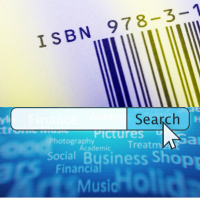Are you tired of old textbooks gathering dust on your shelves? What if you could turn them into cash while being eco-friendly simultaneously? In today’s world, where sustainable practices are gaining momentum, recycling textbooks can help you declutter, contribute to the environment, and make extra money. Let’s explore how to give those textbooks a second life while padding your wallet.
Introduction
In a technology wherein digital studying takes up, published textbooks can become outdated as soon as the semester ends. But don’t be so quick to toss them aside. You may recycle your textbooks responsibly or even earn a chunk of money with some effort. Whether you’re selling them online or via buyback offerings, this manual will assist you in discovering the first-class methods to make your old textbooks give you the desired results!
Step One: Gather the Textbooks
The first step in recycling your textbooks is acquiring all the old ones you wish to recycle. Check your bookshelves, storage regions, and every other location where you may have kept those books. Collect all of the textbooks you do not need or plan to use. It's vital to ensure that the books are in decent circumstances, with minimum damage and intact pages, as recycling centers may have precise suggestions for proper materials. By accumulating your textbooks, you are equipped to transport directly to the next steps of the recycling technique and contribute to a more excellent, sustainable, and green technique for waste management.
“A litter-free area leads to a litter-free mind.”
Step Two: Choose a Recycling Service
Once you have gathered your vintage textbooks, the next step is to pick out a suitable recycling service. There are numerous alternatives to do not forget:
- Local Recycling Centers: Check with your nearby recycling centers to see if they take delivery of books for recycling. Some centers may additionally have specific drop-off places or scheduled collection events.
- Educational Institutions: Contact nearby faculties, colleges, or universities to inquire if they have textbook recycling programs or partnerships with recycling offerings.
- Libraries: Some libraries also have e-book recycling projects or collaborate with recycling corporations to dispose of vintage textbooks responsibly.
- Non-Profit Organizations: Look for non-profit organizations or charities that sell e-book recycling and help with educational tasks.
- Online Recycling Services: Some online structures provide mail-in textbook recycling programs, in which you could ship your vintage textbooks for recycling.
“The greatest hazard to our planet is the belief that someone else will shop it.” — Robert Swan.
Step Three: Prepare the Textbooks for Recycling
Before sending your old textbooks for recycling, it is crucial to prepare them well for shipping.
- Clean the Textbooks: Wipe off any dirt or dust from the covers and pages of the textbooks. Removing dust will make the recycling system more green and hygienic.
- Remove Personal Items: Check the textbooks and remove any personal gadgets or unfastened papers that may have been left inside.
- Separate Hardcover and Softcover Books: If you have a combination of hardcover and softcover textbooks, separate them into particular piles for easier management.
- Group by Size: If viable, institution the textbooks using size, which can help optimize space and packaging for transport.
- Secure Loose Pages: If any pages are unfastened or coming apart, recall securing them with a rubber band or tape to prevent harm throughout transit.
- Packaging: Place the textbooks in a sturdy cardboard container or a packaging fabric for delivery of books. Ensure the container is as it should be sealed and labeled for recycling.
- Check Recycling Guidelines: Review any precise recycling pointers from the chosen recycling carrier or facility. Some may additionally have unique requirements for packaging or familiar substances.
“Every small movement counts about sustainability.”
Step Four: Ship the Textbooks
After preparing your vintage textbooks for recycling, the following step is to deliver them to the chosen recycling provider or facility. Follow the steps to ensure a smooth delivery process:
- Select a Shipping Method: Choose a transport approach that suits your finances. Options include neighborhood drop-off points, mailing offerings, or courier services.
- Package the Books Securely: Place the prepared textbooks inside the packaging you've decided on, ensuring they're well-protected and might not be broken at some stage in transit. Use extra padding or fillers if wished.
- Address and Label: Clearly write the transport address and other essential details on the package. If a delivery label is used, make certain it is correct and affixed securely to the package.
- Check Shipping Requirements: Verify any particular transport necessities or regulations set by the recycling provider or facility. This might also include desired carriers, weight limits, or packaging suggestions.
- Track and Confirm: If possible, use a tracking carrier to monitor the shipment's progress. Keep any shipping receipts or confirmation information for your records.
- Timing: To avoid delays or garage troubles, remember to deliver the textbooks at a time that is convenient for you and the recycling carrier.
- Eco-Friendly Practices: Whenever viable, opt for eco-friendly shipping materials and methods that support the general recycling effort.
“The adventure of a thousand miles starts offevolved with one step.” — Lao Tzu.
Sell Your Textbooks Online and Make Money
Finding out what textbooks are worth can be beneficial if you plan to sell or trade them. Here are some steps to determine the value of your textbooks:
- Online Textbook Buyback Services
Online textbook buyback services are convenient platforms that allow you to sell your used textbooks for cash or store credit. These services make the process of selling textbooks quick and straightforward, typically following these steps:
- Enter Book Information: On the buyback service website, provide the ISBN or identity of your textbooks. The system will search its database for the e-book's info and give a price quote.
- .
- Receive Instant Quotes: Most online buyback offerings offer immediate rate prices primarily based on the circumstance and version of your textbooks.
- Choose Payment Method: After receiving the quote, you can decide whether you want to receive cash or opt for store credit, which may offer higher trade-in values.
- Ship the Textbooks: If offered, comply with the commands to deliver your textbooks to the buyback provider. They may also provide a prepaid shipping label or reimburse your shipping prices.
- Book Inspection: Once the buyback service receives your textbooks, they'll check them out to ensure they are healthy in the situations defined at some stage in the initial quote.
- Payment: After the inspection, you'll receive the price through your chosen method, commonly PayPal, check, or shop credit score.
Popular online textbook buyback services include BookScouter, Chegg, TextbookRush, and Decluttr, among others. It's essential to compare quotes from multiple platforms to get the best value for your textbooks. You can easily do that through the Windsorbooks.com website. Also, check customer reviews and ratings to ensure a reputable and trustworthy transaction.
- Selling on Amazon or eBay
Selling your used textbooks on Amazon or eBay is an incredible way to reach a broader audience and get better costs. Here's how you could sell your books on those platforms:
Selling on Amazon:
- Create an Account: If you do not already have one, sign up for a dealer account on Amazon. Choose between an individual dealer account (pay-according-to-sale) or a professional seller account (monthly rate).
- List Your Textbooks: Use the ISBN or title of your textbooks to list them on Amazon's marketplace. Include relevant details like version, situation, and any unique capabilities.
- Set a Competitive Price: Research similar listings to decide on an aggressive rate for your textbooks. Consider the circumstance and demand when setting the fee.
- Choose Shipping Options: Choose your delivery alternatives, including trendy or expedited shipping. Amazon offers shipping label offerings for dealers, making the technique easier.
- Manage Orders: Monitor your dealer account frequently for orders and immediately control shipping and purchaser inquiries.
2. Selling on eBay:
- Create an Account: If you don't have one, sign up for an eBay dealer account. Choose between an individual seller account (pay-in-line with sale) or a business supplier account (month-to-month fee).
- Create a Listing: Use the ISBN or title of your textbooks to create a list. Include precise descriptions and pix to attract ability shoppers.
- Set a Price: Set a starting rate, or remember to use eBay's public sale-style list to permit shoppers to bid for your textbooks. Alternatively, you can pick a complicated and fast-rate format.
- Choose Shipping Options: Decide on your transport options, which include home and international shipping. You can offer free shipping or charge the shipping price separately.
- Manage Sales: Track your sales, reply to consumer inquiries, and ensure set-off shipping and shipping.
Overview: Popular Online Book Selling Platforms
|
|
Textbook Recycling and Selling Options
Growth in Eco-Friendly Textbook Recycling (2020-2024)
Distribution of Emphasis on Textbook Recycling and Selling
Key Takeaways
- Organize textbooks through situations, readying them on the market or recycling them.
- Use buyback services like WindsorBooks, Chegg, or Decluttr to maximize profit.
- Consider selling on platforms like Amazon or eBay for more excellent pricing manipulation.
- Eco-friendly delivery strategies and recycled packaging can minimize your carbon footprint.
- Outdated textbooks can still be recycled responsibly to reduce waste.
Conclusion
Recycling textbooks and earning profits is a win-win approach that blessings your pocket and the environment. By decluttering your space and choosing responsible recycling alternatives, you contribute to sustainability, even assisting the circular economy. Selling textbooks online via systems like Amazon, eBay, or buyback services can offer a handy way to earn extra money. At the same time, previous or damaged books can be recycled responsibly. Whether you're trying to store, gain, or simply reduce waste, recycling your textbooks is an innovative and green answer that brings free back into your arms.
Source Links









